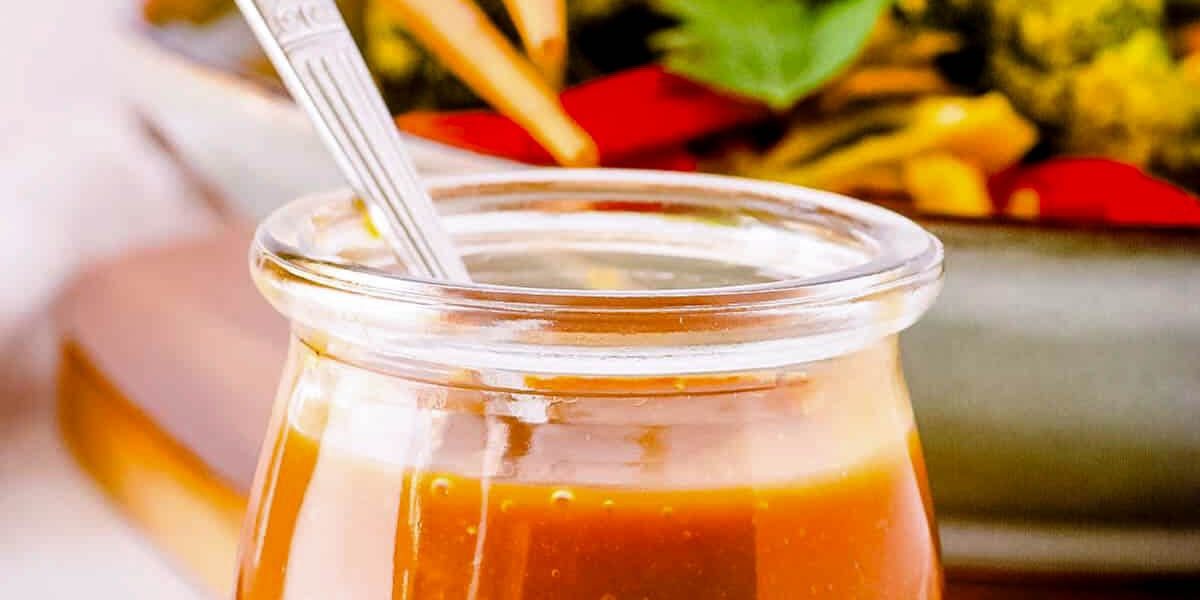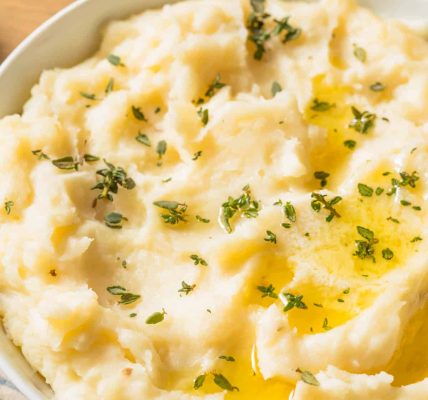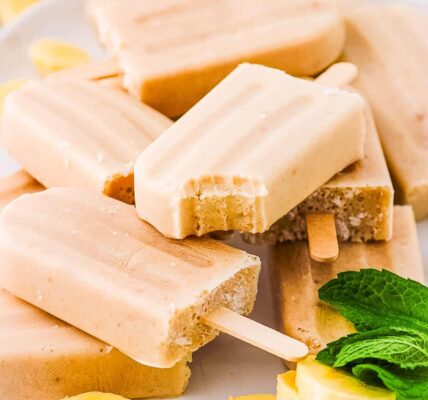This post may contain affiliate links. As an Amazon Associate, I earn from qualifying purchases. Please read my disclosure.
Ready in just 15 minutes, you’ll love the versatility and deliciousness of my low calorie stir fry sauce! Made with soy sauce, miso, a touch of sesame oil, and lots of garlic and ginger, you can use it to make a tasty stir fry or as a dipping sauce. My healthy stir fry sauce helps you create a delicious homemade meal with very little effort!
I love making an easy stir fry recipe on busy weeknights. It’s fast and flavorful, while still being filling and nourishing. However, the problem is that there aren’t many good stir fry sauces at the store. Most are loaded with added sugar, GMO ingredients, and preservatives.
That’s why I decided to create a healthy stir fry sauce with no sugar! It’s full of flavor and comes together quickly with just a few simple ingredients. Plus, it’s not only easy to make but also a great way to get kids to eat their veggies – a win-win!
I’m so excited to share this recipe with all of you! I promise your whole family will love this simple sauce as much as mine does.
My healthy stir fry sauce recipe is packed with flavor and is a lifesaver on busy days!
With just 5 minutes of prep time and 10 minutes of cooking, I can have a delicious sauce ready to enhance any meal or side dish. Plus, it keeps well in the fridge and freezer, making it ideal for meal prep.
And thanks to the combination of fragrant garlic and ginger, combined with a few other aromatic ingredients, I have been able to make a low calorie Chinese sauce that tastes just as good as takeout but is a whole lot more budget friendly!
My low calorie and low fat stir fry sauce is entirely free of added sugar or preservatives. I love making homemade sauces because I can control all of the ingredients, and with my simple ingredient list, I created the healthiest stir fry sauce ever. This way, I can ensure my family enjoys flavorful meals without any unhealthy additives.
I also love how easy to customize! You can make it tangy, spicy, or sweet to suit your preferences. My low calorie stir fry sauce recipe can also be made vegan or gluten-free with a few simple swaps.
This sauce is also incredibly versatile. I typically use this low calorie sauce for stir fries or as a dipping sauce, but it also adds a flavorful boost to fresh vegetables, chicken stir fry, tofu combos, noodles, and more!
Latest Recipe Video!
🥘 Ingredients
My healthy Asian sauce comes together with very basic ingredients found at any grocery store! Check out the recipe card at the bottom of this post for nutritional information and full recipe measurements.
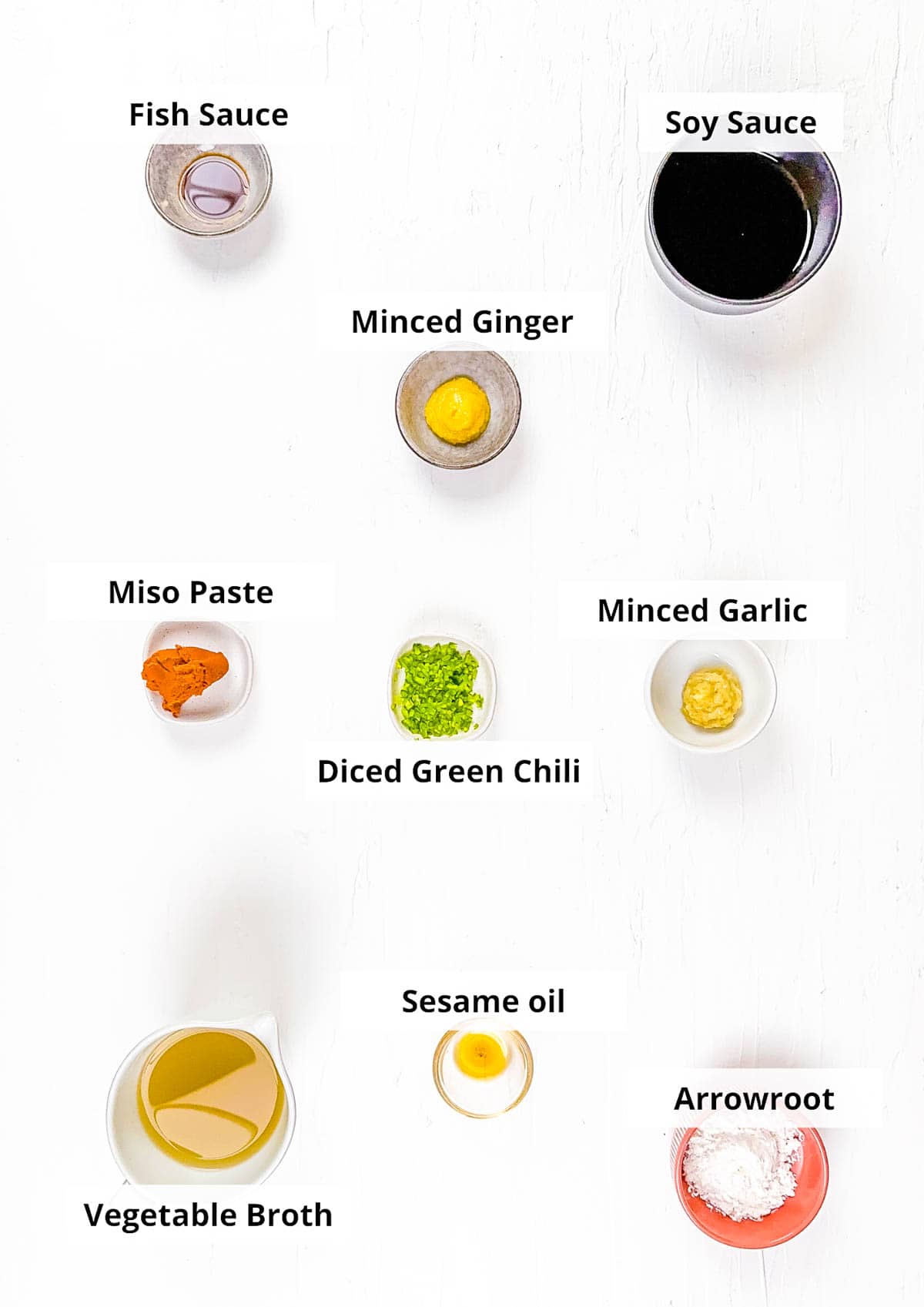
Vegetable Broth: I use vegetable broth to create the base of my sauce. Feel free to use vegan chicken broth or regular chicken stock if you’re not plant-based.
Soy Sauce & Miso Paste: These two ingredients add umami flavor and a touch of savory saltiness that enhances the overall taste of the sauce. I used red miso but you can use any type of miso you like. It’s also possible to substitute soy sauce for coconut aminos or tamari. Note: I don’t add any extra salt to this sauce, the soy sauce and miso combination should be enough!
Garlic & Ginger: Together these aromatic ingredients give my sugar-free stir fry sauce loads of flavor. I mince fresh ginger and 3 cloves of garlic for a bold taste. You can make it extra garlicky with some garlic powder, too.
Green Chili: Finely diced green chili gives the sauce a touch of heat. Just omit the chili if you don’t like spicy food. I’ll also omit this ingredient if I’m making this for kids or anyone sensitive to spice.
Sesame Oil: For the most flavor, I love using toasted sesame oil. If you’re not a fan of sesame use a neutral oil like avocado oil.
Fish Sauce: Typically made from salted anchovies, krill, or other fish, fish sauce is a classic ingredient in many stir fry sauce recipes. However, I have found vegan fish sauce in some stores, or I’ve also used tamari or vegan oyster sauce instead with good results.
Arrowroot Powder: I use a combination of arrowroot and water to form a slurry to thicken the sauce. Cornstarch and tapioca starch will also work.
🔪 How To Make Healthy Stir Fry Sauce
Making homemade stir fry sauce without sugar is extremely easy. It’s a totally foolproof recipe with only a few simple steps and a couple of minutes required.
Check out my video below to see how this low calorie Asian sauce comes together step-by-step.
Form the Base: To begin, I put all the ingredients into a saucepan except for the arrowroot powder. Then I whisk everything together until fully combined and smooth.
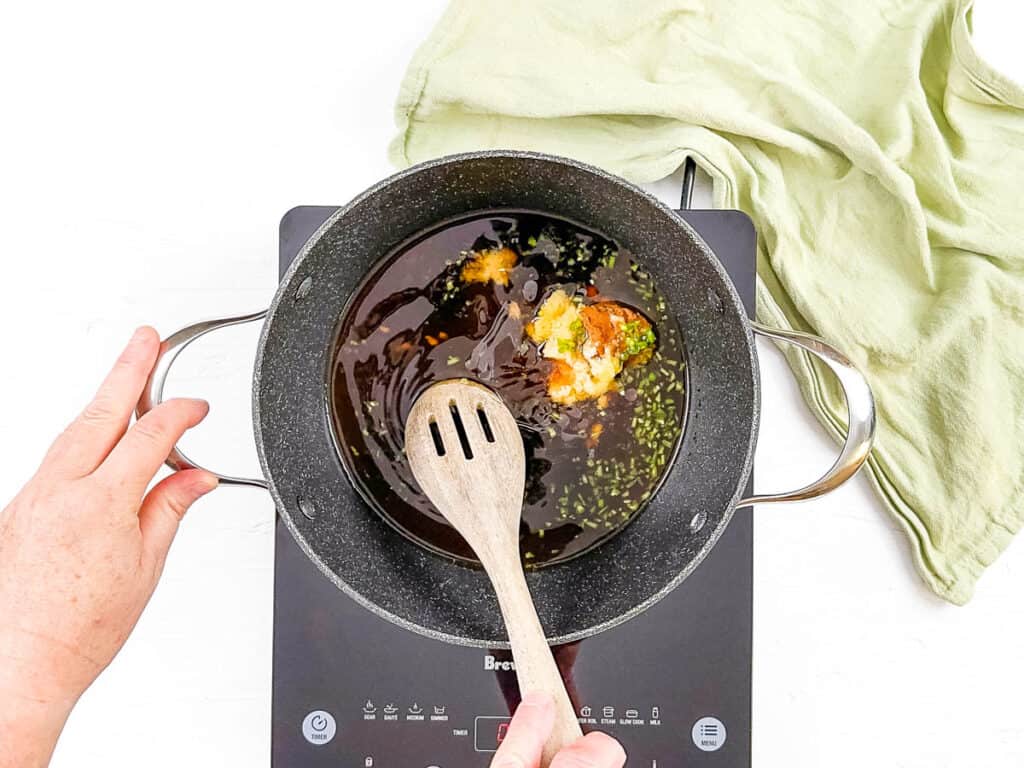
Cook the Sauce: I heat the sauce mixture over medium-high heat and bring it to a boil. Next, I reduce the heat and let it simmer for 5 minutes.
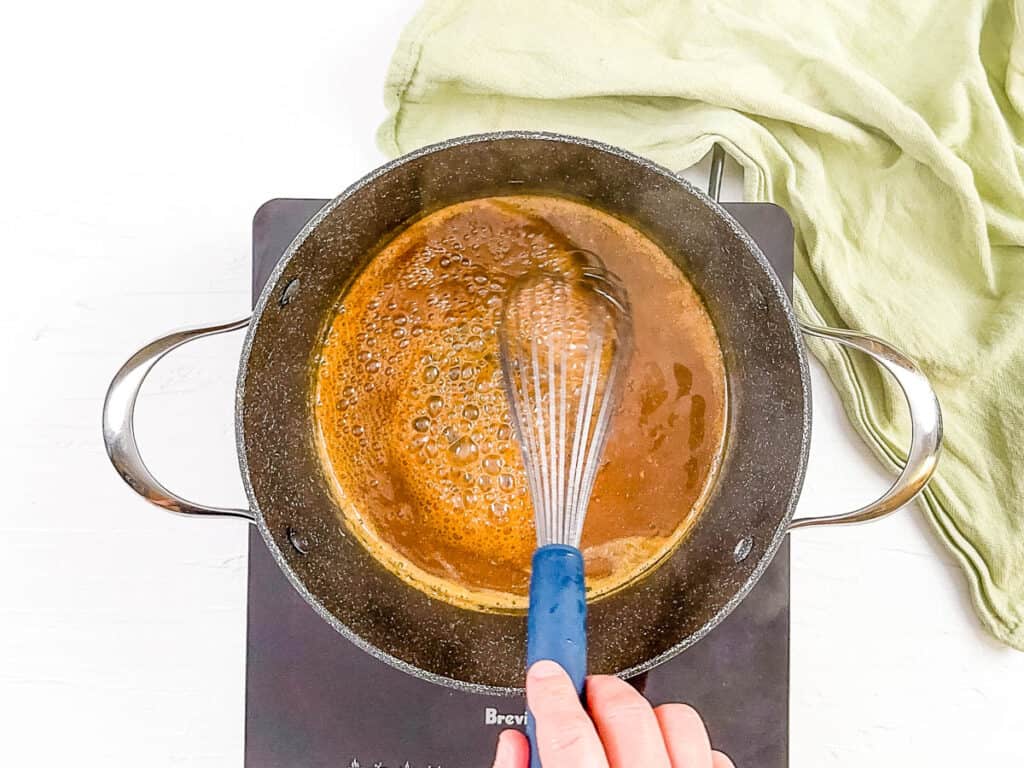
Add The Slurry: First, I mix the arrowroot powder with 1 tablespoon of water in a small bowl to form a slurry. Then I pour the slurry into the sauce while constantly whisking to ensure there are no lumps. I continue to stir the sauce and let it cook until the desired thickness is achieved.
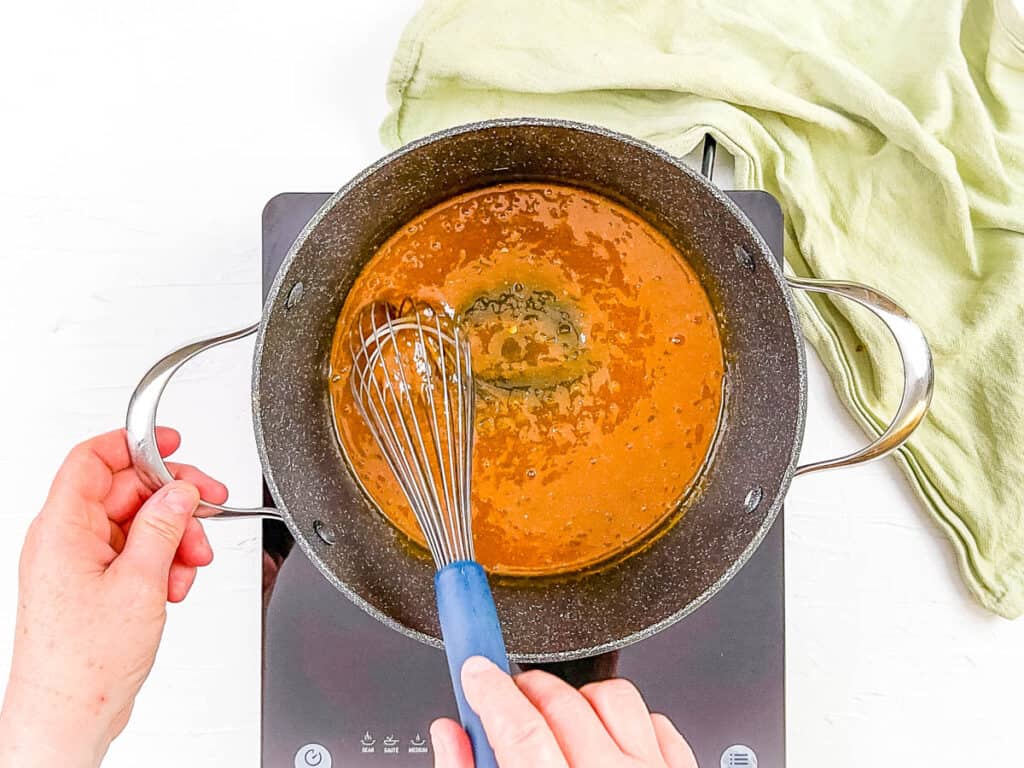
Store Or Serve: When done, I remove the sauce from the heat. Then I store it in a glass jar to be used later or pour it over stir-fry vegetables and serve immediately.
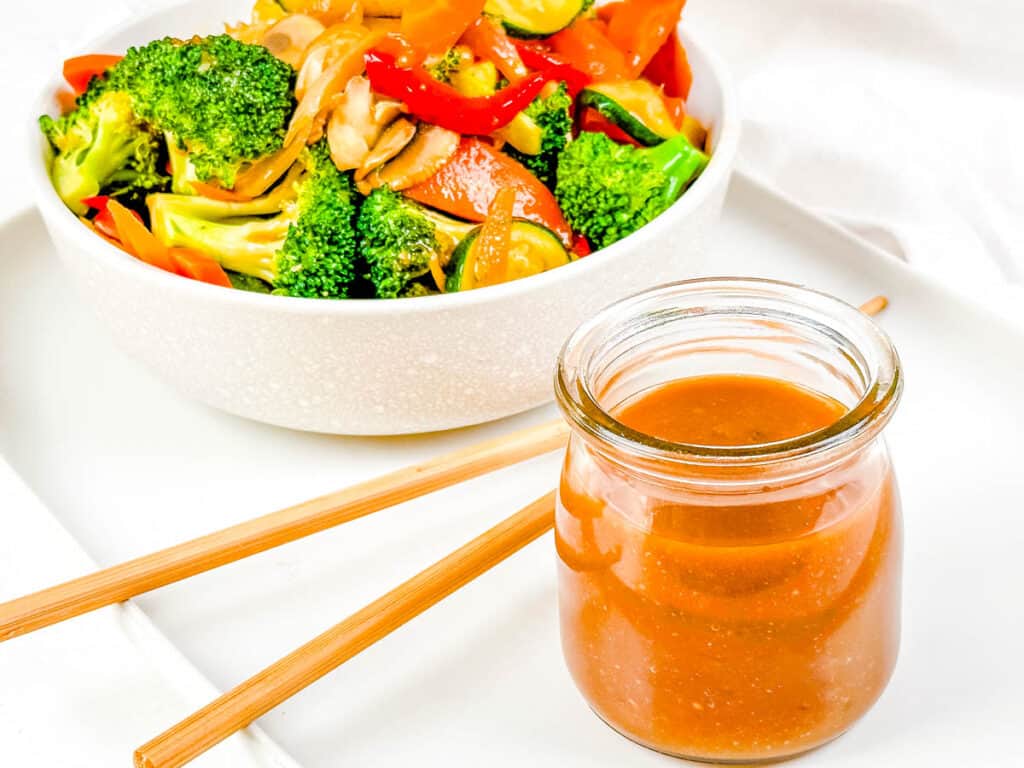
My #1 Secret Tip when making my low calorie stir fry sauce is to whisk the sauce continuously when adding the arrowroot slurry. This prevents lumps and ensures a smooth sauce.
Other Tips To Keep In Mind:
- Double The Recipe: My healthy stir fry recipe makes approximately 1 cup of sauce which will serve about 4 people when mixed with stir fry vegetables. If you want more for an easy meal prep sauce, just double the recipe.
- Adjust The Consistency: I typically simmer my sauce for an extra 5-10 minutes to help reduce the sauce and intensify the flavors. I have noticed that if I’m adding this sauce to cooked stir-fry vegetables, the veggies will release extra liquid, which will cause the sauce to become a bit thin when added. At that point, to achieve your desired thickness you may need to add more arrowroot slurry.
- Save Time And Cleanup: You can add the sauce directly to a stir fry without preheating, even if it’s straight from the fridge. This saves time and reduces the number of dishes to wash.
- Using Leftovers: Got just a little sauce leftover? Don’t toss it out! Add it to marinades, soups, and stews. It adds a delicious umami kick.
📖 Variations
Low-Sodium: To make a low sodium stir fry sauce, use low-sodium soy sauce and fish sauce, and reduce the miso paste.
Gluten-Free: Soy sauce contains gluten but if you swap that ingredient with a gluten free option like tamari or coconut aminos then the recipe is totally gluten free. For the most authentic flavor, I like using gluten free Bragg’s Liquid Aminos.
Soy-Free: If you are soy-free, swap the soy sauce for liquid aminos or coconut aminos. I promise, this swap works seamlessly. You will achieve the same great flavor, without any soy.
Vegan: When I need to make a vegan stir-fry sauce, I’ll use a vegan fish sauce in place of the regular fish sauce. You can also skip this ingredient altogether.
Fat Free: If you want to make a totally fat free stir fry sauce all you have to do is omit the oil. This variation is also the lowest calorie stir fry sauce.
Add Sweetness: My recipe is sugar-free, but you can easily add a little maple syrup or brown sugar for sweetness, which will also help thicken the sauce. To keep this a low sugar Asian sauce, be sure to add only a small amount.
Spicy: Spice up my healthy Chinese sauce with some red pepper flakes, cayenne pepper, or your favorite hot sauce.
Peanut Sauce: Add a little peanut butter to the sauce for a boost of peanut-y flavor that pairs well with many Asian dishes.
Honey Garlic: Blend in a touch of honey (or my vegan honey) and extra garlic to make the best honey garlic chicken stir fry or veggie stir fry!
Tangy Flavor: For an extra tangy flavor, add a splash of rice vinegar or apple cider vinegar.
🍽 Serving Suggestions
This is the best low calorie stir fry sauce to have on hand because you can use it in so many different ways! Its versatility makes it a staple in my kitchen, whether I’m preparing a quick weeknight stir fry or looking to add a flavorful touch to my favorite dishes.
How To Make A Stir Fry
So you have your yummy homemade sauce, but now what? It’s very easy to make a stir fry with my sauce. Here are the simple steps:
Cook The Protein: If I’m using a protein, I always cook it first. I start by heating a tablespoon of olive oil in a large skillet or wok over medium-high heat, and then add my protein of choice, such as tofu. I cook the protein until it’s fully cooked, then remove it from the wok and set it aside.
Cook The Vegetables: In the same skillet, I add another small amount of oil if needed. Then I add my veggies and sauté them until they are tender-crisp, stirring often to ensure they cook evenly and don’t stick to the pan. Some of the best vegetables I like for stir frying include snap peas, baby corn, cabbage, carrots, bok choy, green onions, bell peppers, snow peas, green beans, and broccoli.
Add The Sauce And Serve: To finish, I return the cooked protein to the wok with the vegetables and pour my low calorie stir fry sauce over the mixture. Next, I toss everything together to coat evenly and let it cook for another 1-2 minutes to heat through and blend the flavors. Then, I serve my stir fry with steamed white or brown rice, cauliflower rice, quinoa, or with noodles. Note: My sauce also goes well with my frozen vegetable stir fry in place of red curry sauce or in my Thai basil eggplant stir fry!
Other Ways To Serve
With Noodles: One of my favorite ways to use this healthy stir fry sauce is mixed with rice noodles. It’s also amazing drizzled over my tofu broccoli with sesame noodles.
As A Dipping Sauce: It’s an excellent dipping sauce for these air fryer tofu nuggets, vegan egg rolls or vegetarian wontons. You can also use it as a sauce on the side like for my vegetarian egg roll in a bowl.
As A Marinade: I often use my low calorie stir fry sauce as a marinade for these tofu skewers. It could also work with tempeh and portobello mushrooms.
🫙 Storage Directions
Fridge: Store your low cal stir fry sauce in an airtight container or mason jar in the refrigerator. It will keep well for up to 7 days. Just make sure the sauce is completely cooled before sealing the container.
Freezer: If I’m making a big batch, I like to freeze the sauce. You can pour it into an airtight container or pour it into ice cube trays and freeze until solid. Once frozen, transfer the sauce cubes to a freezer-safe zip-top bag or container. The sauce can be stored in the freezer for up to 3 months.
Reheating: To reheat, transfer the desired amount of sauce to a small saucepan and warm over medium heat until heated through, stirring occasionally. If the sauce is not frozen, you can also add it directly to your stir fry and heat everything together.
❓Recipe FAQs
If your sauce is too salty, you can dilute it with a bit more vegetable broth or water. Adding more vegetables or a splash of unsweetened coconut milk can also help balance the saltiness. Another option is to add a small amount of a sweetener like honey or brown sugar to offset the saltiness.
Lumpy sauce is usually a result of not whisking the arrowroot slurry properly before adding it to the sauce. To prevent lumps, ensure you mix the arrowroot powder with water until it forms a smooth slurry, then add it slowly to the sauce while whisking continuously. If lumps do form, you can strain the sauce through a fine-mesh sieve.
If your sauce is too thick, add a bit more vegetable broth or water to thin it out to your desired consistency. Stir the sauce while adding the liquid to ensure it mixes well and maintains a smooth texture.
Many store bought stir fry sauce brands use preservatives, sugars, and other ingredients I don’t love. The best brands that I have found in stores are Primal Kitchen, Yai’s Thai, Kevin’s, Fody, or Coconut Secret.

Want to Save This Recipe?
Enter your email & I’ll send it to your inbox. Plus, get great new recipes from me every week!
By submitting this form, you consent to receive emails from The Picky Eater.
Love this healthy asian recipe? Please leave a 5-star rating 🌟 in the recipe below and/or a review in the comments section further down the page!
You can also FOLLOW ME on FACEBOOK, INSTAGRAM, and PINTEREST to see more delicious, healthy, family-friendly food, and if you have any questions, I’m here to help!
📋 Recipe Card
Healthy Low Calorie Stir Fry Sauce
Ready in just 15 minutes, you’ll love the versatility and deliciousness of my low calorie stir fry sauce! Made with soy sauce, miso, a touch of sesame oil, and lots of garlic and ginger, you can use it to make a tasty stir fry or as a dipping sauce. My healthy stir fry sauce helps you create a delicious homemade meal with very little effort!
Servings: 4
Calories: 34kcal
- This recipe makes approximately 1 cup of sauce which will serve approximately 4 people when mixed through stir fry vegetables.
- Simmering the sauce for 5 minutes helps to reduce the sauce and intensify the flavors.
- Add the sauce directly to a stir fry, no need to preheat the sauce before adding, even if used straight from the fridge.
- If the cooked stir fry vegetables has extra liquid, before adding the sauce, the sauce will become a little thin therefore you may need to add additional arrowroot to thicken to suit your tastes.
- Coconut aminos can be used as a substitute for soy sauce if preferred.
- Vegetable broth can be substituted with vegan chicken broth if preferred.
- Continuously whisking when adding the arrowroot slurry helps to prevent lumps forming in the sauce.
- Cook over a low heat to thicken and reduce the sauce.
- Store the sauce sealed in a jar in the fridge for up to 7 days.
- Make sure the sauce is completely cooled before covering and storing in the fridge.
Serving: 1cup | Calories: 34kcal | Carbohydrates: 5g | Protein: 3g | Fat: 0.4g | Saturated Fat: 0.1g | Polyunsaturated Fat: 0.2g | Monounsaturated Fat: 0.1g | Sodium: 1473mg | Potassium: 59mg | Fiber: 1g | Sugar: 1g

